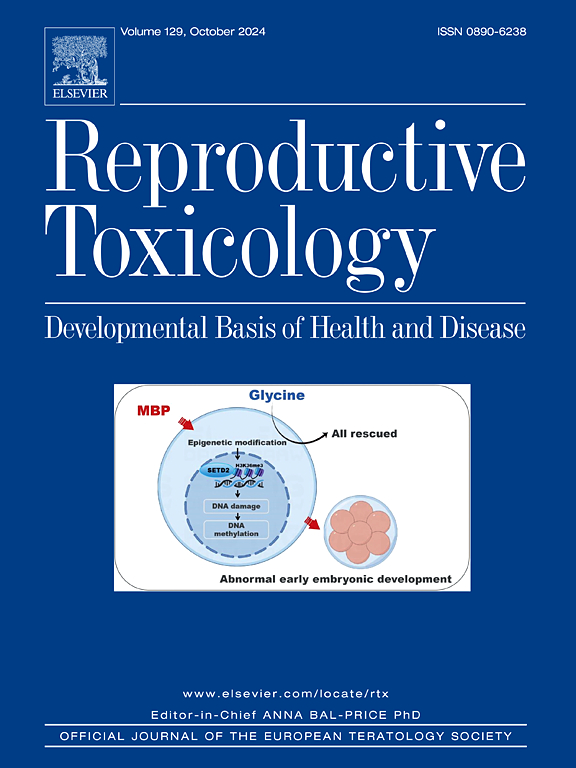Molecular mechanisms associated with embryotoxic effects of heavy metals in the Sea Urchin
IF 3.3
4区 医学
Q2 REPRODUCTIVE BIOLOGY
引用次数: 0
Abstract
The sea urchin embryo model has become a classic model for studying the harmful effects of heavy metals and the molecular responses associated with exposure to these pollutants. In this context, several biochemical pathways have been associated with exposure to heavy metals in sea urchin embryos, such as autophagy, apoptosis, oxidative stress, activation of heat shock proteins, and induction of metallothioneins. These biochemical pathways are activated or altered in embryos after exposure to heavy metals; therefore, this review provides a comprehensive literature exploration, summarizing the main biochemical changes observed in sea urchin embryos following exposure to certain heavy metals, such as cadmium, gadolinium, arsenic, manganese, zinc, mercury, copper, nickel, and lead.
评论:"重金属对海胆胚胎毒性影响的分子机制"。
海胆胚胎模型已成为研究重金属有害影响及与暴露于这些污染物相关的分子反应的经典模型。在此背景下,海胆胚胎暴露于重金属环境中有几种生化途径,如自噬、细胞凋亡、氧化应激、热休克蛋白的激活和金属硫蛋白的诱导。这些生化途径在接触重金属后在胚胎中被激活或改变;因此,本文对海胆胚胎暴露于镉、钆、砷、锰、锌、汞、铜、镍、铅等重金属后的主要生化变化进行了综述。
本文章由计算机程序翻译,如有差异,请以英文原文为准。
求助全文
约1分钟内获得全文
求助全文
来源期刊

Reproductive toxicology
生物-毒理学
CiteScore
6.50
自引率
3.00%
发文量
131
审稿时长
45 days
期刊介绍:
Drawing from a large number of disciplines, Reproductive Toxicology publishes timely, original research on the influence of chemical and physical agents on reproduction. Written by and for obstetricians, pediatricians, embryologists, teratologists, geneticists, toxicologists, andrologists, and others interested in detecting potential reproductive hazards, the journal is a forum for communication among researchers and practitioners. Articles focus on the application of in vitro, animal and clinical research to the practice of clinical medicine.
All aspects of reproduction are within the scope of Reproductive Toxicology, including the formation and maturation of male and female gametes, sexual function, the events surrounding the fusion of gametes and the development of the fertilized ovum, nourishment and transport of the conceptus within the genital tract, implantation, embryogenesis, intrauterine growth, placentation and placental function, parturition, lactation and neonatal survival. Adverse reproductive effects in males will be considered as significant as adverse effects occurring in females. To provide a balanced presentation of approaches, equal emphasis will be given to clinical and animal or in vitro work. Typical end points that will be studied by contributors include infertility, sexual dysfunction, spontaneous abortion, malformations, abnormal histogenesis, stillbirth, intrauterine growth retardation, prematurity, behavioral abnormalities, and perinatal mortality.
 求助内容:
求助内容: 应助结果提醒方式:
应助结果提醒方式:


